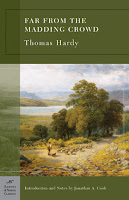
Mystery Review: The Locked Room is the eighth Martin Beck mystery, replete with all we've come to expect: intense social commentary, a dissection of the Swedish police, human beings barely escaping depression. A classic locked room mystery is not what we've come to expect from Sjöwall and Wahlöö, but they do it well and this is as good as any book in the series. The authors hit a high point a few books back and have managed to stay there consistently. The mystery, the interplay of familiar personalities, the description of police procedures (and the occasional humorous bumbling) are only half the story. The other half is the social critique of Swedish society, the police force, what's happening to Stockholm. They all seem to be going in the wrong direction. There seems to be an intense frustration behind The Locked Room. The authors even give us some ethical conundrums to chew on (can one chew a conundrum? perhaps only in a mixed metaphor). Beck himself has a limited role here as he's recovering from the gunshot wound received in the previous installment, but he's still the straw that stirs the drink. As much as I enjoy gradually getting to know the recurring characters as they unravel mysteries, it's the chance to get a glimpse of Sweden at a certain time that I appreciate almost as much. The Locked Room is another success. [5★]





















